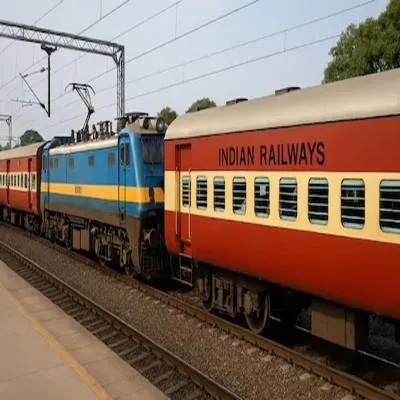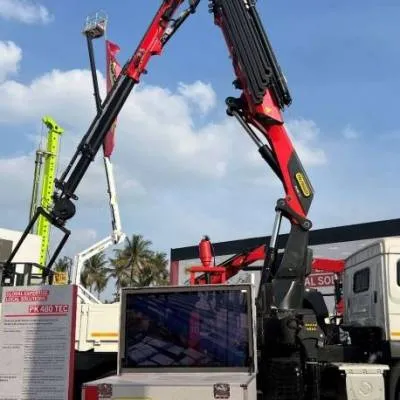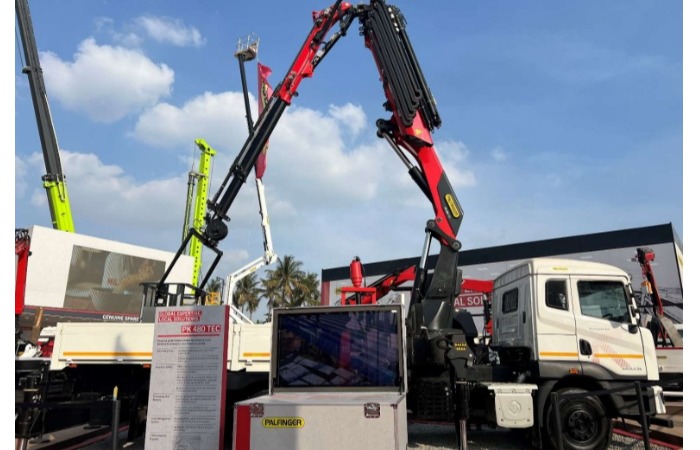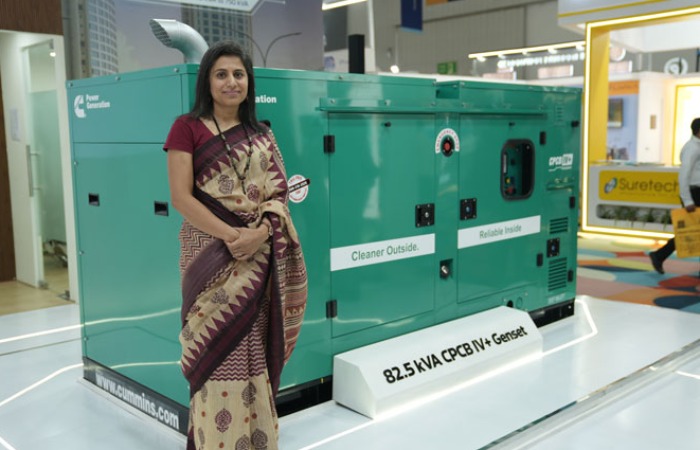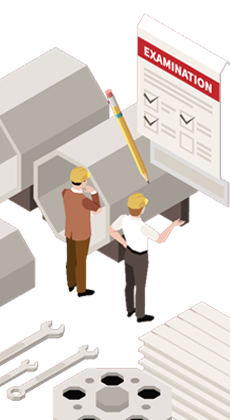Schedule a Call Back
India Rising

India’s construction equipment industry is entering its most defining decade. With government infrastructure spending running at unprecedented pace and private sector investment reviving across roads, metros, mining, and industrial corridors, the momentum has translated into one of the sector’s strongest growth phases in history. FY2025 closed at 1,40,191 CE units—an extraordinary milestone that underscores India’s position as the world’s fastest-growing and third-largest equipment market.
Now, with Excon 2025 set to open its doors to a global audience, the mood across OEMs, component makers, and equipment users is unmistakable: optimism, scale, and readiness. India is not merely consuming machines—it is engineering them, exporting them, and reshaping the global competitiveness of the CE ecosystem.
The following pages bring together insights from industry leaders across the machinery value chain—OEMs, road equipment specialists, tyre majors, compressor manufacturers, and technology providers—who together define the current and future direction of India’s CE industry.
A new era of demand
Few understand India’s changing equipment demand better than JCB India, one of the most influential players in the country’s CE landscape. According to Deepak Shetty, CEO & MD, JCB India, the demand shift is not about replacing mid-sized machines, but adding larger ones alongside them. “India is entering an era of unprecedented infrastructure development… As project scales grow, we are seeing a clear rise in demand for large and high-capacity equipment,” he says. Expressways, metros, renewable corridors, and industrial clusters are driving a surge in high-tonnage excavators and production-class loaders. But Shetty is equally clear that mid-sized and compact models will remain central to India’s market.
“The future is not ‘large versus mid-sized’; it is ‘large and mid-sized.’ Growth will come from both, and customers will increasingly build mixed fleets.”
This dual-market expansion underlines why India’s CE demand is rising so rapidly: the country needs machines for multi-kilometre expressways as much as it does for village roads, irrigation canals, and dense urban redevelopment.
If JCB sets the tone for the big picture, Larsen & Toubro, with its deep project exposure, provides insight into the granular diversity of demand across applications. Arvind K Garg, Advisor to CMD, L&T, breaks this down: “India’s infrastructure growth spans expressways, bridges, metros, mining, smart cities, irrigation, rural roads and utilities. The list is a long one.”
L&T’s Komatsu line-up strategically reflects these diverse needs—from compact PC35 and PC81 models for smart cities and telecom trenching, to heavyweight PC390, PC500 and the HB365 Hybrid Excavator for mining. For highways and bridges, models like the PC210, PC225 and GD535 graders ensure productivity where timelines are unforgiving.
“Our portfolio serves EPC contractors, mining firms, SMEs, rental companies, municipal bodies and emerging construction enterprises,” Garg adds. India’s CE market isn’t growing only in volume—it is widening across new applications, new user segments, and new project typologies.
India Builds for India—and the World
A major force behind this rise is India’s manufacturing confidence. Action Construction Equipment (ACE) embodies this manufacturing-first mindset. Manish Mathur, CEO – Cranes, emphasises that localisation is not just a supply-chain strategy—it is innovation in action.
“Localisation is central to our product strategy, enabling us to build cost-efficient, high-performance equipment tailored to Indian conditions,” he says. Make in India and AtmaNirbhar Bharat have accelerated ACE’s ability to expand domestic manufacturing and deepen component engineering. Importantly, ACE is increasingly exporting these India-built machines.
“We are now exporting to over 42 countries… equipment designed and built in India can meet global standards,” Mathur asserts. As India moves toward becoming the world’s second-largest CE market by 2030, manufacturers like ACE are showing that India can also become a global design and export powerhouse.
Sustainability at the core
From earthmoving we move to concrete and road equipment—sectors experiencing rapid modernisation driven by safety and productivity needs.
AJAX Engineering, a leader in concrete solutions, takes a strongly safety-led approach. MD & CEO Shubhabrata Saha says safety is embedded into every machine they build. “Safety is not merely a priority, it is a foundational principle,” he emphasises. From electronically controlled engines that enter safe mode during irregularities, to rear-view cameras, ROPS/FOPS cabins, wireless radio remote controls for boom pumps, and safety interlocks—AJAX’s lineup reflects a modern shift in contractor expectations. Its offerings also include cutting-edge technologies like 3D concrete printing and electric-operated pumps that reduce emissions in confined spaces.
Similarly, Fayat Group’s road equipment arm is accelerating localisation and digitalisation through its Dynapac, BOMAG, Marini and PTC brands. Abhijit Som, Managing Director – Fayat Road Equipment Division, notes: “Our Pune facility operates under the ‘Made in India for the World’ philosophy… Localisation and lean manufacturing give us cost competitiveness and superior quality.” Digital platforms like Dyn@Link enable predictive maintenance, enhancing equipment uptime—an absolute necessity on critical projects.
The group’s priorities for the next five years include deeper localisation, AI-enabled construction technologies, sustainable engineering aligned with India’s Net-Zero 2070 goal, and expanded training for operators.
Compressors form the heartbeat of drilling, road construction, quarrying, and underground works. ELGi Equipments has emerged as a leader not only in product quality but in end-to-end localisation. Bhavesh Karia, Executive President, ELGi Equipments, says ELGi builds its critical components—including airends, motors and pressure vessels—entirely in India.
“Localisation at ELGi isn’t just geography, it is engineering, supply chain, service and market alignment working together,” he remarks. The company operates a network of 100+ service centres and 600 trained technicians, ensuring rapid support even at remote sites.
“For remote locations, we focus on fast response, strategic spare-parts stocking and service contracts prioritising uptime,” Karia adds. This alignment between manufacturing and service is essential as projects move deeper into mountains, tunnels, and border infrastructure.
Multi-sector growth
India’s mining resurgence and bulk material movement needs are shaping strategic expansions across OEMs. Arx Mining, for instance, is focusing on strengthening its presence in mining, construction, and logistics over the next three to five years.
According to Amarnath Ramachandran, MD, Arx Mining: “ARX anticipates strong growth momentum… We aim to expand our product portfolio, deepen partnerships, and drive innovation through indigenous design and manufacturing.”
Gainwell Commosales, with deep expertise across mining and construction equipment solutions, sees growth as a function of staying closely aligned with customer needs.
Manav Kohli, CEO, Gainwell Commosales, explains: “We watch how customers’ work changes and add products that help them do more at lower cost.”
Gainwell is expanding into areas like asphalt plants, machine guidance systems, underground utility equipment, and rebuild centres that give older machines a new life at lower cost. “Over the last eight years, we've grown 10 per cent per year. We expect to grow even faster over the next five,” Kohli notes.
Behind every machine lies a critical component—the tyre. BKT, one of the world’s largest OTR tyre manufacturers, sees sustainability as its driving force. Rishi Raj Singh, Head OE Sales, APAC, BKT Tires, highlights that BKT already uses 32 per cent renewable raw materials in its products, along with over 98 per cent process waste recycling. “Sustainability guides every stage of our product lifecycle,” he says.
BKT’s plants—Bhuj, Waluj, Bhiwadi, Chopanki—are increasingly energy-efficient, with Waluj reducing water use by 25 per cent and achieving record-low scrap in 2025. The company is also preparing for electric and hybrid machinery through e-ready tyres and reductions in rolling resistance. “India plays a pivotal role in our global manufacturing and sourcing ecosystem,” Singh adds.
As excavators remain the largest equipment category in India, OEMs are racing to improve speed, fuel efficiency, safety, and telematics. HD Hyundai Construction Equipment India has upgraded its SMART X PLUS excavators and BS-V wheel loaders for quicker cycles and improved fuel economy.
According to Aanand Dulariya, Head – Dealer Development & Marketing: “Upgraded hydraulics and powertrains increase working speed, while refined electronics help manage fuel more effectively.” Safety improvements—from better visibility to telematics-enabled idle reduction—ensure responsible and efficient operations.
Kobelco Construction Equipment India echoes this multi-segment evolution. Moses Eddy, Director, explains that India’s demand is rising simultaneously across large, mid-sized and compact segments. “Large machines are becoming vital for highways and metro systems; mid-sized excavators remain the industry’s backbone; compact models are growing in urban construction,” he says. Kobelco’s growth plan focuses on localisation, fuel-efficient technologies, expanded dealer networks, and India-specific product development.
As Excon 2025 approaches, India’s CE industry stands at a remarkable inflection point. Demand is rising in sync with national aspirations—multi-modal transport corridors, high-speed rail, metro connectivity, border infrastructure, last-mile roads, and large-scale mining.
But the story is no longer only about consumption. It is about capability—India designing, engineering, building, exporting, and servicing world-class machinery.
A unified theme emerges: India’s CE industry is not just growing—it is maturing, advancing, and globalising. Excon 2025 will reflect this energy. And as India builds the next chapter of its infrastructure story, the machines powering it are more advanced, more reliable, more sustainable, and more local than ever before.
India is rising. And its machinery is rising with it.


Subscribe Now
Subscribe to our Newsletter & Stay updated
RECENT POSTS
Popular Tags
Folliow us
Related Stories
PALFINGER’s Strong Showing at EXCON 2025
PALFINGER strengthened its long-term commitment to India at EXCON 2025, marking its largest participation at the exhibition with a 1,000 sq m boo...
Cat Introduces Services Commitment With CVA From 2026
Caterpillar has announced a new Services Commitment linked to its Cat Customer Value Agreement (CVA), aimed at reducing downtime and simplifying ...
Integration with OEMs is fundamental to our success
Shveta Arya, Managing Director, Cummins India

